-
A few days ago marked the birthday of Ana Mendieta, a visionary Cuban-American artist whose work resonates deeply with me. Today, I honor Ana Mendieta by sharing her story and celebrating the works that have profoundly moved me. Her art not only bridges the material and spiritual worlds but also challenges us to reexamine our relationship with the earth and with each other.

© The Estate of Ana Mendieta Collection, LLC, vía Galerie Lelong & Co.v
Mendieta’s artistry bridged the realms of body art and land art, leaving the imprint of the female form on the landscape and extending the language of sculpture into the natural world. Her profound connection with elemental materials such as earth, water, and tree bark reflects a mythical and spiritual relationship with nature, creating a dialogue that feels both timeless and transformative.
She was a pioneer, not only as a woman artist but also as an explorer of ancient myths and prehistoric art. She found inspiration in the omnipresence of the feminine and its deep-rooted connection with nature—an aspect she believed was central to the artistic practices of indigenous and European cultures of the past. Her work often explored themes of creation, faith, and femininity, bringing these ideas to life through natural materials like clay, grass, flowers, and branches.

Ana Mendieta, Imágen de Yágul, 1973/2018. Color photograph. © The Estate of Ana Mendieta Collection, LLC. Courtesy Galerie Lelong & Co.
One of her most inspiring series for me is Siluetas, a collection of sculptures and imprints crafted from natural elements. These forms evoke a sense of unity between the human body and the earth, embodying creation myths and highlighting the interconnectedness of life. Mendieta’s work also underscores the parallels between the exploitation of nature and the oppression of women. Both are treated as inferior, as commodities to be owned, used, and discarded—a stark truth that Mendieta boldly illuminated in her art.

Untitled: Silueta Series, Iowa

Ana Mendieta. Untitled: Silueta Series, Iowa From Silueta Works in Iowa, 1976-1978, 1976-78. Color photograph. © The Estate of Ana Mendieta Collection, LLC. Licensed by the Artist Rights Society (ARS), New York
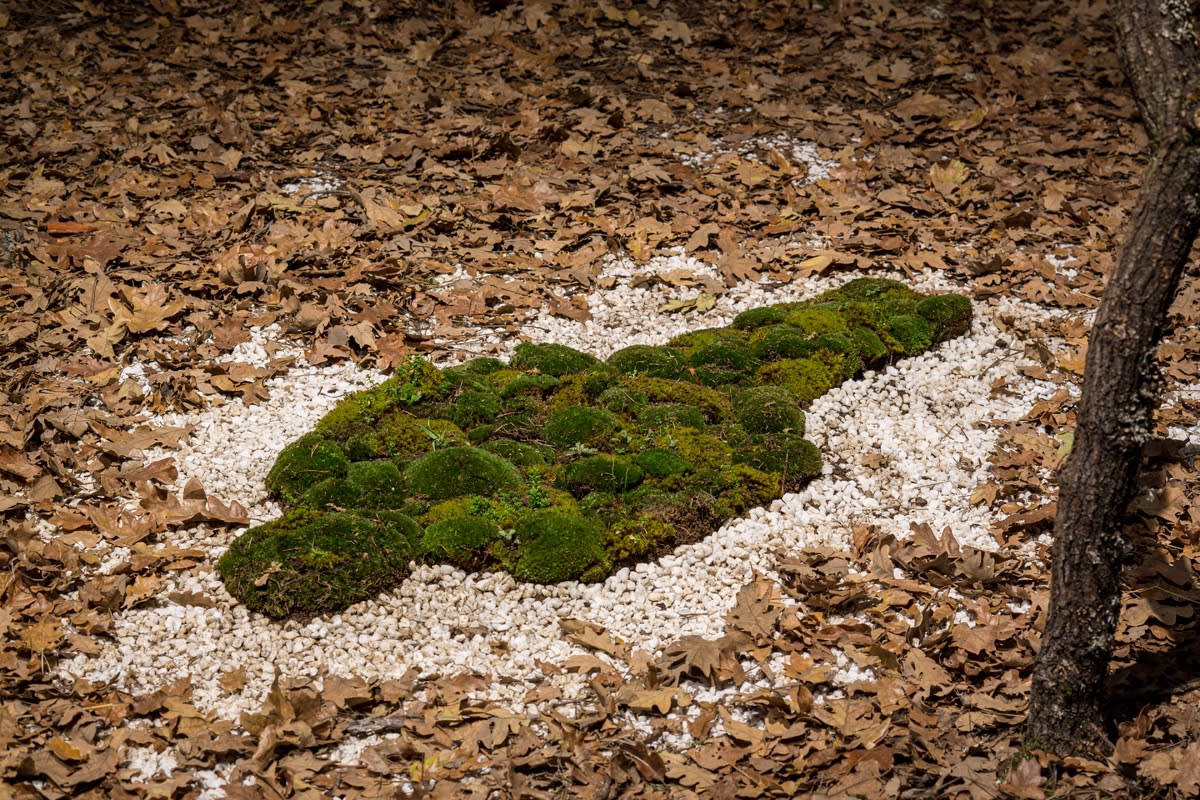
Exhibition View: “Ana Mendieta. In Search of Origin,” MUSAC, 2024. Untitled: Silueta Series, 1978/2024 (detail) © The Estate of Ana Mendieta Collection, LLC. Courtesy of The Estate of Ana Mendieta Collection, LLC and Galerie Lelong & Co. / VEGAP, Madrid, 2024.

Ana Mendieta, Sandwoman, 1983 (Estate print 2018) Black and white photograph Edition of 6 with 3 APs (GP2322) © The Estate of Ana Mendieta Collection. Born in Havana, Cuba, in 1948, Mendieta emigrated to the United States as a child. Her early experiences of displacement deeply influenced her practice, infusing it with themes of belonging, identity, and spiritual reconnection with the earth. Though her life was tragically cut short in 1985, her legacy continues to inspire generations of artists.
-
The Fondation Cartier in Paris is currently celebrating the extraordinary career of Olga de Amaral, a pioneering Colombian artist who has redefined the possibilities of textile art. This retrospective highlights Amaral’s innovative approach to weaving and her ability to transform materials like linen, horsehair, gesso, gold leaf, and palladium into monumental, sculptural works that transcend traditional boundaries. Spanning over six decades, the exhibition explores nearly 80 pieces that reflect her mastery of color, texture, and form, as well as her deep connection to Colombia’s cultural heritage and pre-Columbian traditions.

Exhibition view © Olga de Amaral - Picture © Marc Domage
As a Latin American artist and woman working with textiles, Olga de Amaral’s story resonates deeply with me. Her journey mirrors the challenges many of us face in a medium often dismissed as craft or decorative. Yet, Olga shattered these perceptions, elevating textiles into the realm of fine art and inspiring generations of artists, including myself.
Her layered creations evoke geological strata or abstract maps, drawing from Colombia’s landscapes and cultural memory while remaining boldly contemporary. This duality—the ability to honor tradition while pushing creative boundaries—is profoundly inspiring. It reminds me that as artists, our work is more than creation; it is an act of preserving and transforming the stories, traditions, and landscapes that shape us.
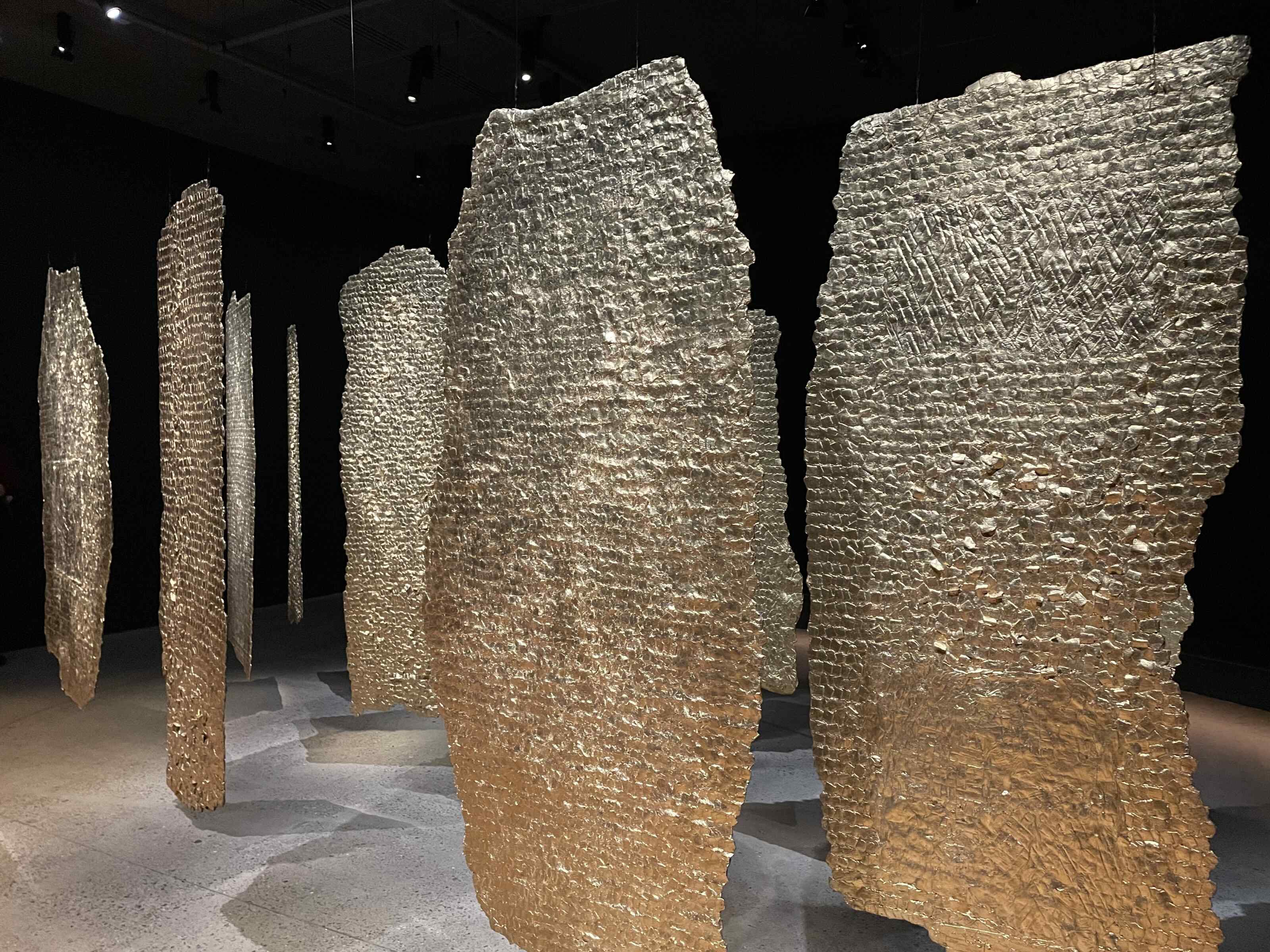
Exhibition view © Olga de Amaral - Picture © Arts in the City
Amaral’s pivotal role in the Fiber Art movement challenged the status quo, breaking free from the constraints of "women’s work" and positioning textiles as a legitimate and bold art form. Her work defies categorization, standing alongside the avant-garde contributions of contemporaries like Magdalena Abakanowicz and Sheila Hicks. By foregrounding textile art’s ties to feminist and emancipatory movements, Amaral showed the world the power of weaving—not just as a physical act, but as a metaphor for connection, resilience, and transformation.
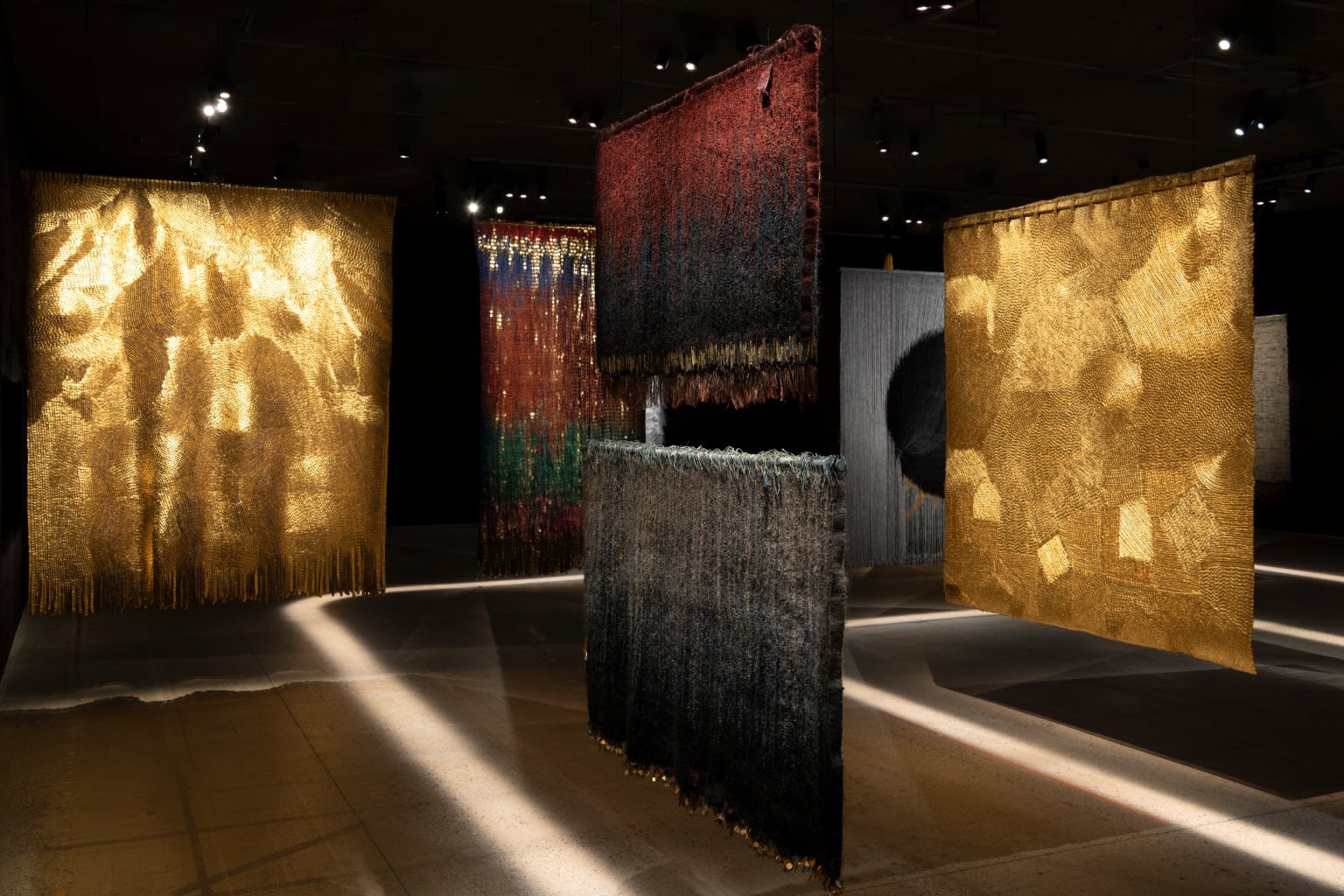

Exhibition view © Olga de Amaral - Picture © Arts in the City
For me, Olga de Amaral represents what it means to persevere and create against all odds. Her work is a space for contemplation and rebellion, where every thread resonates with individuality and as part of a greater whole. Through her art, she has not only transformed textiles but has also given women in the arts a legacy of boldness and possibility.
This exhibition is a tribute to her enduring impact and a reminder of the limitless potential of our medium. Olga de Amaral’s story is one of beauty, strength, and transformation—a beacon for Latin American artists and women in the art world.

Olga de Amaral at Casa Amaral, Bogotá, Colombia, 2005
-
The past week I visited the incredible exhibition 'Magdalena Abakanowicz: Every Tangle of Thread and Rope' at the Tate Modern. Being a textiles lover and texture fiend myself, the sheer scale of Abakanowicz pieces alongside the details that her pieces reveal had got me staring at each artwork in a complete state of awe. My eyes just couldn't get enough and I tried absorbing as much of the textures as possible.

The reality is that a fine art textiles exhibition is something you don't see so much of. Perhaps textile art has never been considered fine art is because it has always had a practical purpose? Textile art is used to create, often, beautiful things such as blankets and other items that aid in daily life, whereas fine art is only for viewing or entertainment purposes. Even though the art that is produced under textiles can be stunning to look at, it still doesn't count. Well, it didn't until Magdalena Abakanowicz changed the story.
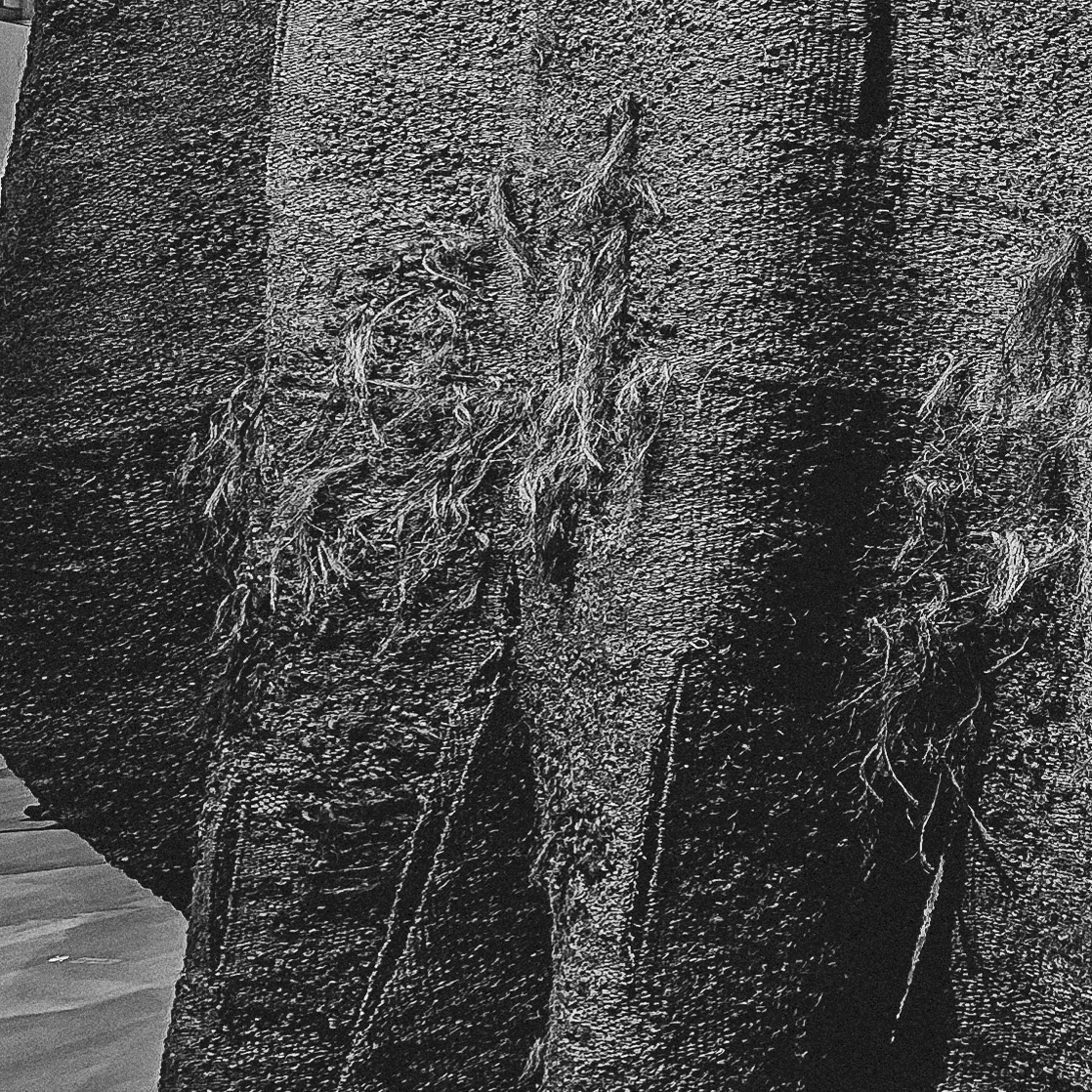
The pioneering textile artist defined her own artistic language and resisted pre-defined categories of tapestry, textile, craft, decorative art or fine art. A new genre was named for her: the 'Abakans'; these huge organ-like woven sculptures made from sisal, wool, and hessian.
Throughout her life, Abakanowicz maintained a strong connection to the natural world and the biological, organic matter of life. As she said: 'I see fibre as the basic element constructing the organic world on our planet... It is from fibre that all living organisms are built, the tissue of plants, leaves and ourselves… our nerves, our genetic code, the canals of our veins, our muscles… We are fibrous structures.'

Abakanowicz displayed within her home and studio animal horns, hides, shells, cocoons and other objects which not only provided inspiration but were sometimes incorporated into her works alongside plant and animal fibres. And this comes through in her works that feel like they could be living, pulsating creatures that she has crafted from her mind and her hands.
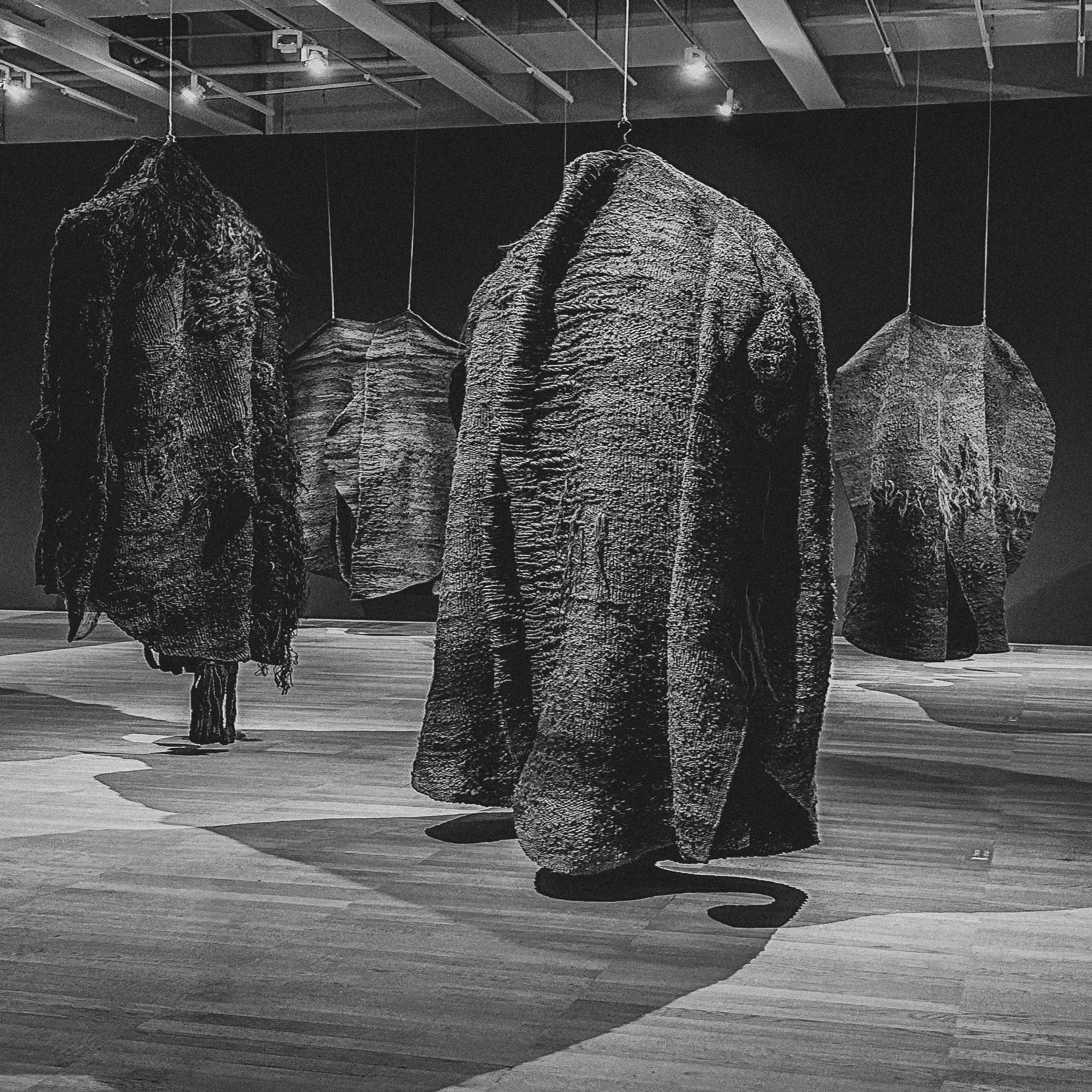
Magdalena Abakanowicz may be an artist many haven't heard of before, and this show does a great job of doing her works justice, and these works need to be seen in person to fully appreciate their scale and intensity.